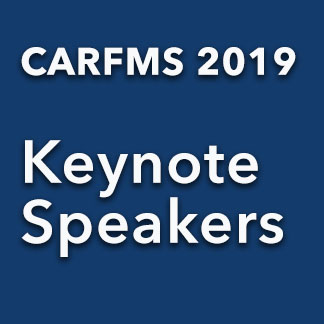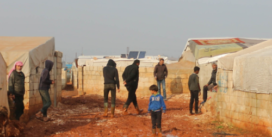- Fall Newsletter, 2025, Issue 15
- Using International Online Learning Modules to Engage Students in the Study of Critical Global Issues
- Upcoming Book Launch: Hearts of Freedom
- Announcing winners of the 2025 CARFMS Essay Contest
- The New York Declaration for Refugees and Migrants and its two Global Compacts: Addressing the Symptoms or the “Root Causes” of Forced Displacement?*
Keynote Speakers

Caroline Kihato, University of Johannesburg
Stealth humanitarianism: Incentivizing the inclusion of urban displaced populations, lessons from the global south
Over half of the world’s refugees or people living in refugee-like conditions now live in urban areas. This means over 7 million people seek protection in the world’s cities. Yet while raging debates over integration in Europe, North America and Australia continue, it is ‘cities of the South’ that most directly confront the presence of thousands – sometimes hundreds of thousands – of newcomers. Amman, Kampala, Peshawar, Gaziantep, Beirut and Nairobi already accommodate many of the displaced from Syria, Somalia, Congo and the Sudan. Drawing on research conducted in Kampala, Nairobi and Johannesburg, this talk explores the challenges that local governments and urban planners face in trying to address urban displacement. Even where the will to assist exists, municipalities are often unable or unwilling to address refugee needs: refugees are not voters and they compete with local populations for scarce resources. Yet refugees are unlikely to go away and their de facto economic, social and political integration have the potential to reshape urban markets, values and institutions. While universal appeals to the human rights and state obligations towards refugees are important, they can unwittingly provoke xenophobic violence and political backlash from communities facing similar if not worse socio-economic conditions. I argue that building inclusive, resilient and sustainable cities in an era of urban displacement requires ‘stealth work’ incentivizing local leaders, partnering with mid-level bureaucrats and using legal and technical loopholes that expand urban opportunities for marginalized populations.
Liliana Jubilut, Universidade Catolica de Santos
Durable Solutions for Refugees and Other Forced Migrants on the Global Compacts
In late 2018 the Global Compacts on Refugees and on Safe, Orderly and Regular Migration are to be adopted by States after a 2-year process started with the New York Declaration for Refugee and Migrants. The topic is timely as the number of refugees and other forced migrants has been on the rise and the lack of protection is also growing. The process relevant as it is the first time that comprehensive international agreements are to be put in place on refugees and migrants since the 1950s. The creation of a legal document is necessary as a way to implement a rights-based language of protection and to create commitments in protecting refugees and other forced migrants. However, these also need to focus on durable solutions if protection of refugees and other migrants is to be achieved. Thus assessing the Global Compacts’ approaches to durable solutions is essential.
